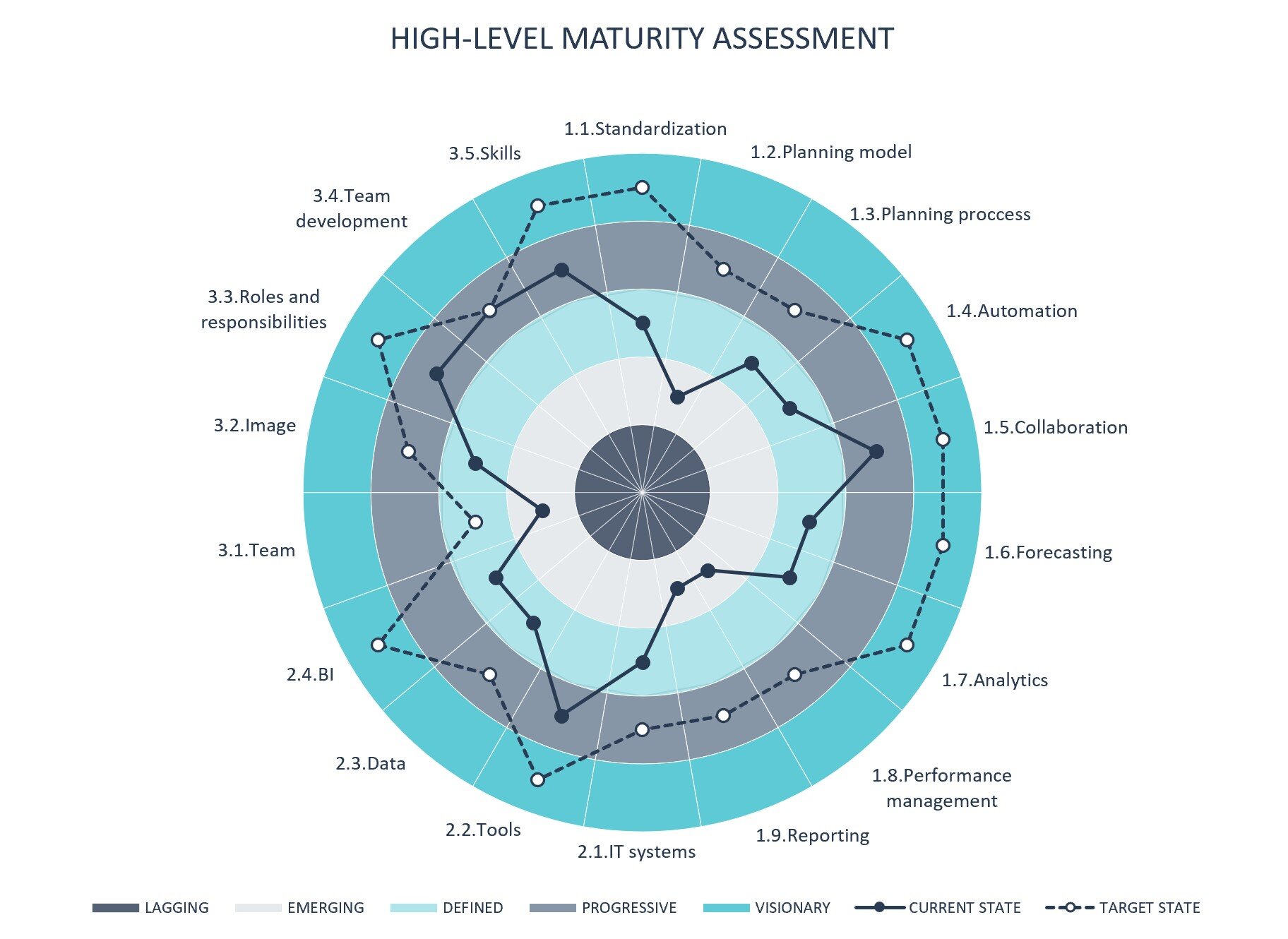FP&A Maturity Assessment Tool
Recent technological advancements and constant changes in the business environment enable the FP&A function to adopt new ways of work, new practices, new tools to meet the needs of their internal and external customers. Unfortunately, a huge part of efforts of FP&A teams is still allocated to data gathering and process administration leaving no time to reconsider the state of the FP&A function. These outdated practices and old-fashioned FP&A organizations can no longer coexist with modern realities which require the FP&A function to be focused on value creation.
From a strategic standpoint, FP&A capabilities to provide business insights and drive informed decision making can become a source of competitive advantage for the company. That is the reason why many finance and FP&A leaders are taking the steps to transform their functions: restructure processes, upgrade systems and tools, develop teams. The starting point in this arduous journey is to understand the current state of the FP&A function and then determine which way to evolve based on the existing, emerging and likely to appear requirements and expectations of the stakeholders.
This can be performed with the help of our FP&A maturity assessment model focused on major tasks of the function (strategic planning and budgeting, forecasting, analytics, management reporting, performance management and decision support) and built around 3 key areas – processes, tools/systems and people.
The maturity assessment tool is based on a model shown below. This model can be used to determine the level of maturity of the FP&A function, ranging from 1.Lagging (least mature) to 5.Visionary (most mature):
Assessment Tool Summary
Below we demonstrate the results of the FP&A maturity assessment using our tool. The example is based on hypothetical data.
As FP&A organizations can vary from one company to another and differ significantly in size, scope, structure and culture, it is rather challenging to create one model that fits all this diversity. Moreover, the FP&A function encompasses many processes and activities which even within the same company can be positioned differently in terms of their maturity. Thus, every FP&A organization can simultaneously demonstrate attributes of several stages depending on the criteria of assessment and the focus of the provided services. Therefore, the overall result of the assessment may fall somewhere in between the proposed stages of maturity. Keeping this in mind, the main goal of the model is to evaluate the capabilities and highlight the opportunities for improvement in various aspects of the FP&A function.



